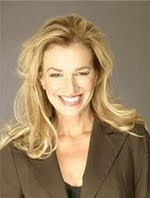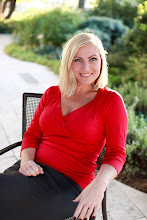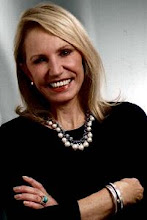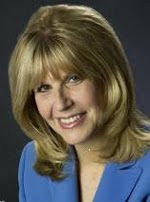by Cathy Scott
I was reminded in a recent Twitter post of the strong competitiveness in a small newsroom I once worked in. The Twitter comment came from Charlene "Charlie" Fern, managing editor in the early '90s at the now-closed Vista Press, a daily newspaper in North San Diego County. The 50-year-old Vista Press was in direct competition with the San Diego Union's North County edition, which (before it merged to become the San Diego Union-Tribune) was huge by comparison.
Still, Charlene, my boss at the Vista Press, an Andrews McMeel Universal-owned paper, recalled that we scooped the SD Union on a regular basis. Maybe it was because the reporters all had fire in their bellies to get the story first. On Twitter, she started a conversation about her view of some print reporters and their current complacency.
"Do what you say and say it in color," Charlene said, "because it matters."
The Vista Press, she wrote on Twitter in several (quite complimentary) tweets, "was at its best when Cathy Scott, Russell Klika, Leslie Hueholt, Deniene Husted, etc., were there, proving a small paper could run circles around a metro. We had a great, competitive staff, for the most part, and a lot of competition. That drives excellence."
She reminded me of a breaking story I wrote on deadline, dictated by phone from the scene where a garbage truck worker was buried alive in garbage. He'd been standing behind a truck with a full load at the time. It took an army of law enforcement -- and even medium-security California Department of Forestry and Fire Protection prisoners -- 12 hours to locate the worker's body. I remained at the scene and was there at 11 when the body was found, long after competing news organizations had gone home. Charlene held the presses that night until the story was done. It made the first edition in the morning, beating the other papers in the area. They'd reported that the man was still missing.
"Holding the presses was thrilling, even if I got in trouble for it," Charlene said.


Marine Corps base. I went on training mission with Marines on base and out at sea. I went to Somalia to cover Operation Restore Hope. I was in the pool of reporters to accompany then-Prime Minister Margaret Thatcher around the base for eight hours. She looked right through the pool of reporters and photographers as if we didn't exist. Reporting back to the throng of waiting media at the end of the day, passing on the goings on of the tour and reading back direct quotes was, as I look back on it, fun, even though it was hard work and tons of pressure.
 Klika is one of the best photogs I've ever worked with. He's up there with Clay Myers, my partner covering the rescue of pets on the rubbled streets of New Orleans in the wake of Hurricane Katrina (a nonstop assignment for Best Friends Animal Society's website and magazine). Watching photo veterans of this caliber work in the field, well, it's a sight to see.
Klika is one of the best photogs I've ever worked with. He's up there with Clay Myers, my partner covering the rescue of pets on the rubbled streets of New Orleans in the wake of Hurricane Katrina (a nonstop assignment for Best Friends Animal Society's website and magazine). Watching photo veterans of this caliber work in the field, well, it's a sight to see.Russell and I once went on assignment about 250 miles off the San Diego shore, covering a story for the Vista Press. It was in 1992, just after the USS Kitty Hawk came out of the mothballs a new and reburbished ship and returned to her home port of San Diego.
We flew out of Coronado's North Island on a P-3 radar plane and landed on the Kitty Hawk, missing the first wire and catching the second. The force -- of going from who knows how fast to zero -- threw us forward, because the seats were fixed backward, in a 14-seater with nothing but servicemen aboard -- and Russell and me.
After we landed, my face must have been ashen, because one of the airmen looked at me, then asked Russell, "Is she OK?" Russell peered at me from his seat, and then said, "No."
I barely remember deplaning and walking across the tarmac. When we made it onto the bridge, the fleet commander was waiting to give us a tour and brief us on the training exercises at sea. But as soon as he saw me, the admiral barked at one of his men, "Get her to sickbay!" (whereupon a medic put a Dramamine patch behind my ear, and in no time I was fine). Russell laughs when he says, "I still tell that story."
Russell and I covered the L.A. riots following the Rodney King verdict. I vividly remember the man with a large pipe threatening a SWAT officer and Russell, the only photographer there, caught the moment in an award-winning photo. As we sat in Russell's pickup truck, we were surrounded by angry protestors armed with baseball bats. When they started rocking the truck, Russell hit the gas to escape. On another assignment, we went to the makeshift migrants camps in the back country of San Diego's North County to interview workers in our broken Spanish and their broken English.
We cut our journalism teeth at that paper, and photographers, editors and fellow reporters mostly moved on to bigger and better journalism jobs: Klika became a combat photographer, with two tours of duty in Iraq. He's now a civilian combat photo instructor for the National Guard. Leslie moved on to the Tulsa World; Deniene Husted to the Riverside-Press Enterprise and Los Angeles Time. I moved on to the Las Vegas Sun, followed by a lengthy stint as a correspondent for the Reuters wire service and the New York Times.
Charlene? Well, she went to work at the Texas governor's mansion and then to the White House as Laura Bush's personal speechwriter. Many others who came before us have moved onward and upward too.
North San Diego County was a fertile training ground for us. We worked our tails off, learned to crunch on deadline, and savored each occasional scoop over our seemingly giant neighbor, the San Diego Union. It was David and Goliath, and occasionally David won.
Photos (of Scott gearing up to board a military helicopter at Camp Pendleton and a self-portrait of Klika in Iraq) courtesy of Russell Klika.











































